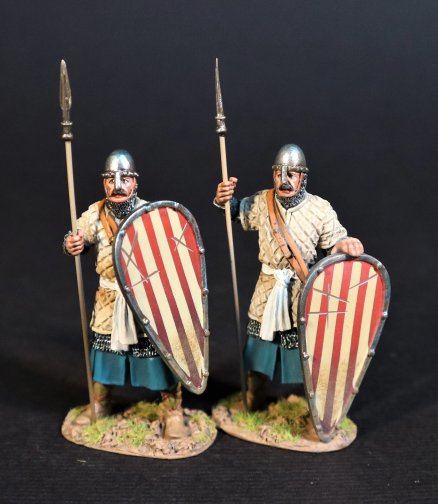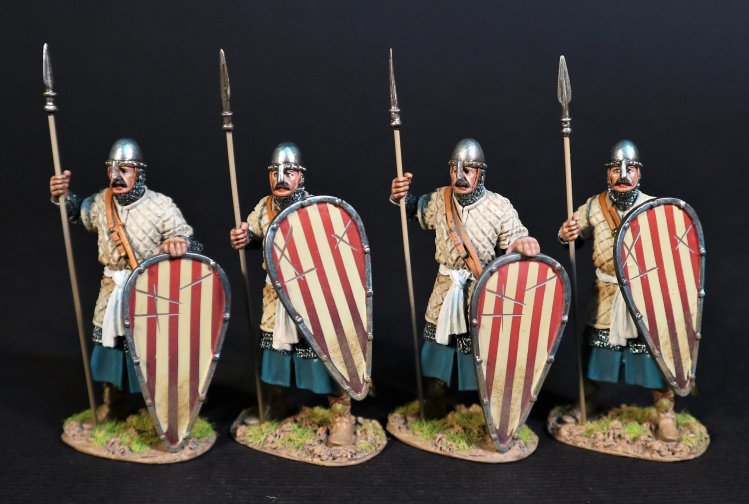- Joined
- Feb 2, 2011
- Messages
- 2,093
NEW RELEASES FOR APRIL 2023
THE AGE OF ARTHUR
THE VIKINGS
THE VIKING DRAGON (DREKI) LONGSHIP
When Magnus the Good (1047) put his ships to sea, it was as if a swarm of angels from the King of heaven – soared over the waves. (The skald Arnorr)
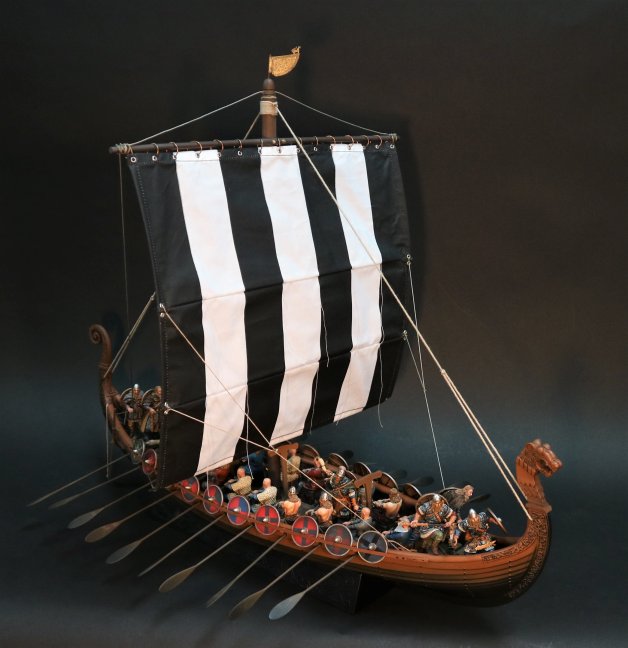
LONGSHIP2
THE AGE OF ARTHUR,
VIKING DRAGON (DREKI) LONGSHIP,
(79pcs)
LONGSHIP Dimensions 59cm length x 35cm wide (includes oars) x 48cm height
LONGSHIP Dimensions 23 ¼” length x 13 ¾” wide (includes oars) x 19” height
THE LONGSHIP SET CONTAINS
20 CREW ROWING,
6 VIKING WARRIORS.
20 Shields
23 Oars
SHIPPING BOX DIMENSIONS 67cm length x 38cm wide x 9cm height
26 ½” length x 15” wide x 7 ½” height
WEIGHT 5.59kg
Without the Viking ships, there would be no Viking Age. Norse sagas, skaldic poems and contemporary foreign sources describe the Viking ships as marvelous at sea:
The Vikings sailed over vast distances with these ships, from America in the west to Asia Minor in the east, and perhaps even farther.
It was the seaworthiness of the Viking ships, together with the Norsemen’s knowledge of navigation and seamanship, which made it possible for them to conquer the ocean. The Vikings’ understanding of the sea is also reflected in the Old Norse language that has about 150 words for waves.
During the Viking Age (900-1200 AD) Vikings were the dominant seafarers of the North Atlantic. One of the keys to their success was the ability to navigate skillfully across the open waters. The Vikings were experts in judging speed and wind direction, and in knowing the current and when to expect high and low tides.
Viking navigational techniques are not well understood, but historians postulate that the Vikings probably had some sort of primitive astrolabe and used the stars to plot their course.
Longships were a type of specialized Scandinavian warship, documented from at least the fourth Century BC. Originally developed and designed by the Norsemen (Vikings) for commerce, exploration, and warfare. Many of the Longship’s characteristics were adopted by other cultures, such as the Anglo-Saxons, and continued to influence shipbuilding for centuries.
The Longship’s designs evolved over many centuries, and continuing up until the 6[SUP]th[/SUP] century with clinker built ships like Nydam and Kvalsund. The longship appeared in its complete form between the 9[SUP]th[/SUP] and 13[SUP]th[/SUP] Centuries. The character and appearance of these ships have been reflected in Scandinavian boat-building traditions to the present day.
The particular skills and methods employed in making longships are still used worldwide, often with modern adaptations.
They were all made out of wood, with cloth sails (woven wool) and had several details and carvings on the hull.
The Longships were characterized as graceful, long, narrow and light, with a shallow draft hull designed for speed. The ships’s shallow draft allowed navigation in waters only one meter deep and permitted arbitrary beach landings, whilst its light weight enabled it to be carried over portages or used bottom up for shelter in camps
Longships were also double ended, the symmetrical bow and stern allowing the ship to reverse direction quickly without a turn around. This trait proved particularly useful at northern latitudes, where icebergs and sea ice posed hazards to navigation.
Longships were fitted with oars along almost the entire length of the boat itself. Later versions had a rectangular sail on a single mast, which was used to replace or augment the effort of the rowers, particularly during long journeys.
The average speed of Viking ships varied from ship to ship, but lay in the range of 5-10 knots (9-18 km/h) and the maximum speed of a longship under favourable conditions was around 15 knots (28km/h)
PLEASE NOTE LONGSHIP2 IS THE SAME AS THE FIRST LONGSHIP EXCEPT THE SAIL IS BLACK AND WHITE INSTEAD OF RED AND WHITE.
ANGLO SAXON/DANISH SHIELDWALL
A Housecarl was a non-servile manservant or household bodyguard in medieval Northern Europe.
The institution originated amongst the Norsemen of Scandinavia, and was brought to Anglo Saxon England by the Danish conquest in the 11[SUP]th[/SUP] Century. They were well-trained, and paid as full time soldiers. In England, the royal housecarls had a number of roles, both military and administrative.
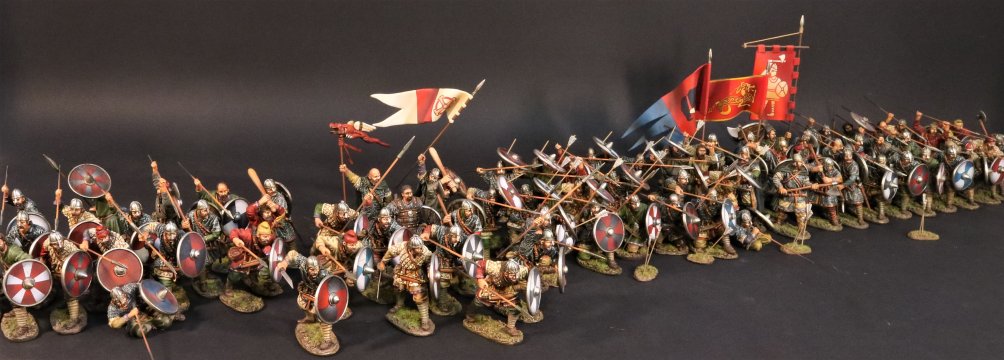
According to 12[SUP]th[/SUP] Century Danish historian, Svend Aggeses, Cnut’s housecarls were governed by a specific law, the “Witherlogh” or “Lex Castrensis”. Their organization in a band or guild was Scandinavian in character, but the legal process the “Witherlogh” defines is mainly derived from canon law, directly or through Anglo Saxon laws.
The “Witherlogh” defined an etiquette, such as Housecarls were to be seated at the kings’ tables according to a number of factors, among which skill in war and nobility. They could be disgraced by being moved to a lower place at the tables. This was mainly punishment for minor offences, such as not giving proper care to the horse of a fellow housecarl. After three such offences, the offender could be seated at the lowest place, where no-one was to talk to him, but everyone could throw bones at him at will.
The murder of another housecarl was punished by exile, and treason was punished by death, and confiscation of all property.
Quarrels between housecarls were decided by a specific tribunal, in the presence of the king.
A special tax was levied to provide pay in coin to the royal housecarls. According to historical references this pay was monthly. Therefore due to these wages, the housecarls can be seen as a type of mercenary.
They were not bound to indefinite service, and there was only one day in the year during which they could leave the king’s service. That was New Year’s Eve, a day on which it was customary for Scandinavian kings to reward their retainers with gifts!.
The number of housecarls receiving land grants and estates from the king, seems to be limited. The “Domesday Book” records only thirty three landholding housecarls in the kingdom, and these estates were also small. Thus it does not seem that the English landholders were deprived of their properties to provide for land grants to the king’s housecarls.
The royal housecarls had some administrative duties in peacetime as the king’s representatives. In 1041 there was a revolt against a very heavy levy in Worcester, and two of the king’s housecarls, who were acting as tax collectors, were killed.
By the end of the 11[SUP]th[/SUP] Century in England, there may have been as many as 3,000 royal housecarls.
The housecarls of Harold Godwinson’s army had a crucial role as the backbone of Harold’s army at Hastings. Although numerically they were the smaller par of Harold’s army, their superior equipment and training meant they could have been used to strengthen the militia, or “Fyrd”, which made up most of the Anglo Saxon army.
The housecarls were positioned in the centre around the leader’s standard, but also probably in the first ranks of both flanks, with the fyrdmen behind them.
At the Battle of Hastings, these housecarls fought after Harold’s death, holding their oath to him until the last man was killed.
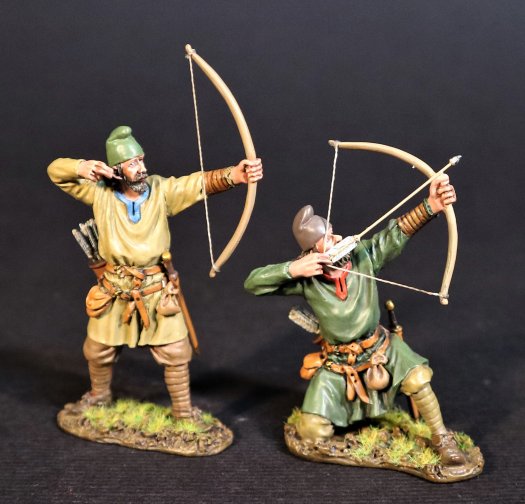
SX-67A
THE AGE OF ARTHUR,
ANGLO SAXON/ DANES.
SAXON ARCHERS.
(2 pcs)
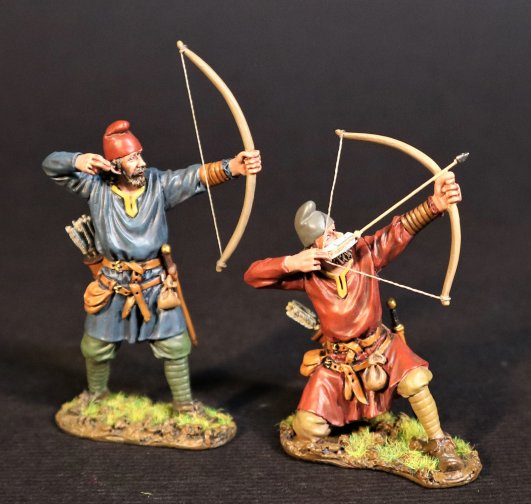
SX-67B
THE AGE OF ARTHUR,
ANGLO SAXON/ DANES.
SAXON ARCHERS.
(2 pcs)
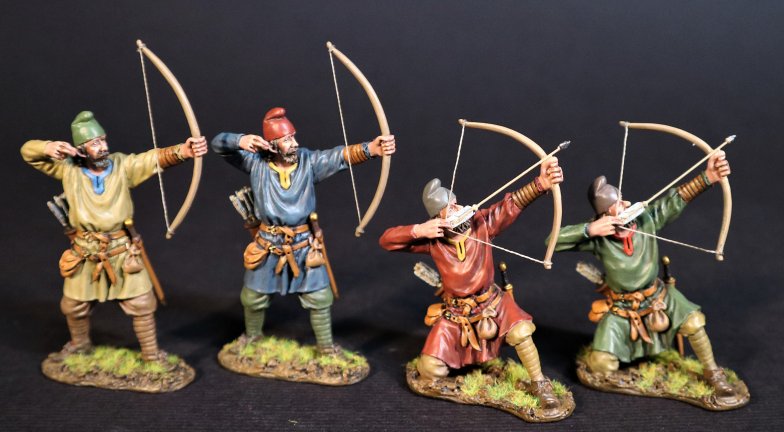
SX-67N
THE AGE OF ARTHUR,
ANGLO SAXON/ DANES.
SAXON ARCHERS.
(4 pcs)
THE AGE OF ARTHUR
THE VIKINGS
THE VIKING DRAGON (DREKI) LONGSHIP
When Magnus the Good (1047) put his ships to sea, it was as if a swarm of angels from the King of heaven – soared over the waves. (The skald Arnorr)

LONGSHIP2
THE AGE OF ARTHUR,
VIKING DRAGON (DREKI) LONGSHIP,
(79pcs)
LONGSHIP Dimensions 59cm length x 35cm wide (includes oars) x 48cm height
LONGSHIP Dimensions 23 ¼” length x 13 ¾” wide (includes oars) x 19” height
THE LONGSHIP SET CONTAINS
20 CREW ROWING,
6 VIKING WARRIORS.
20 Shields
23 Oars
SHIPPING BOX DIMENSIONS 67cm length x 38cm wide x 9cm height
26 ½” length x 15” wide x 7 ½” height
WEIGHT 5.59kg
Without the Viking ships, there would be no Viking Age. Norse sagas, skaldic poems and contemporary foreign sources describe the Viking ships as marvelous at sea:
The Vikings sailed over vast distances with these ships, from America in the west to Asia Minor in the east, and perhaps even farther.
It was the seaworthiness of the Viking ships, together with the Norsemen’s knowledge of navigation and seamanship, which made it possible for them to conquer the ocean. The Vikings’ understanding of the sea is also reflected in the Old Norse language that has about 150 words for waves.
During the Viking Age (900-1200 AD) Vikings were the dominant seafarers of the North Atlantic. One of the keys to their success was the ability to navigate skillfully across the open waters. The Vikings were experts in judging speed and wind direction, and in knowing the current and when to expect high and low tides.
Viking navigational techniques are not well understood, but historians postulate that the Vikings probably had some sort of primitive astrolabe and used the stars to plot their course.
Longships were a type of specialized Scandinavian warship, documented from at least the fourth Century BC. Originally developed and designed by the Norsemen (Vikings) for commerce, exploration, and warfare. Many of the Longship’s characteristics were adopted by other cultures, such as the Anglo-Saxons, and continued to influence shipbuilding for centuries.
The Longship’s designs evolved over many centuries, and continuing up until the 6[SUP]th[/SUP] century with clinker built ships like Nydam and Kvalsund. The longship appeared in its complete form between the 9[SUP]th[/SUP] and 13[SUP]th[/SUP] Centuries. The character and appearance of these ships have been reflected in Scandinavian boat-building traditions to the present day.
The particular skills and methods employed in making longships are still used worldwide, often with modern adaptations.
They were all made out of wood, with cloth sails (woven wool) and had several details and carvings on the hull.
The Longships were characterized as graceful, long, narrow and light, with a shallow draft hull designed for speed. The ships’s shallow draft allowed navigation in waters only one meter deep and permitted arbitrary beach landings, whilst its light weight enabled it to be carried over portages or used bottom up for shelter in camps
Longships were also double ended, the symmetrical bow and stern allowing the ship to reverse direction quickly without a turn around. This trait proved particularly useful at northern latitudes, where icebergs and sea ice posed hazards to navigation.
Longships were fitted with oars along almost the entire length of the boat itself. Later versions had a rectangular sail on a single mast, which was used to replace or augment the effort of the rowers, particularly during long journeys.
The average speed of Viking ships varied from ship to ship, but lay in the range of 5-10 knots (9-18 km/h) and the maximum speed of a longship under favourable conditions was around 15 knots (28km/h)
PLEASE NOTE LONGSHIP2 IS THE SAME AS THE FIRST LONGSHIP EXCEPT THE SAIL IS BLACK AND WHITE INSTEAD OF RED AND WHITE.
ANGLO SAXON/DANISH SHIELDWALL
A Housecarl was a non-servile manservant or household bodyguard in medieval Northern Europe.
The institution originated amongst the Norsemen of Scandinavia, and was brought to Anglo Saxon England by the Danish conquest in the 11[SUP]th[/SUP] Century. They were well-trained, and paid as full time soldiers. In England, the royal housecarls had a number of roles, both military and administrative.

According to 12[SUP]th[/SUP] Century Danish historian, Svend Aggeses, Cnut’s housecarls were governed by a specific law, the “Witherlogh” or “Lex Castrensis”. Their organization in a band or guild was Scandinavian in character, but the legal process the “Witherlogh” defines is mainly derived from canon law, directly or through Anglo Saxon laws.
The “Witherlogh” defined an etiquette, such as Housecarls were to be seated at the kings’ tables according to a number of factors, among which skill in war and nobility. They could be disgraced by being moved to a lower place at the tables. This was mainly punishment for minor offences, such as not giving proper care to the horse of a fellow housecarl. After three such offences, the offender could be seated at the lowest place, where no-one was to talk to him, but everyone could throw bones at him at will.
The murder of another housecarl was punished by exile, and treason was punished by death, and confiscation of all property.
Quarrels between housecarls were decided by a specific tribunal, in the presence of the king.
A special tax was levied to provide pay in coin to the royal housecarls. According to historical references this pay was monthly. Therefore due to these wages, the housecarls can be seen as a type of mercenary.
They were not bound to indefinite service, and there was only one day in the year during which they could leave the king’s service. That was New Year’s Eve, a day on which it was customary for Scandinavian kings to reward their retainers with gifts!.
The number of housecarls receiving land grants and estates from the king, seems to be limited. The “Domesday Book” records only thirty three landholding housecarls in the kingdom, and these estates were also small. Thus it does not seem that the English landholders were deprived of their properties to provide for land grants to the king’s housecarls.
The royal housecarls had some administrative duties in peacetime as the king’s representatives. In 1041 there was a revolt against a very heavy levy in Worcester, and two of the king’s housecarls, who were acting as tax collectors, were killed.
By the end of the 11[SUP]th[/SUP] Century in England, there may have been as many as 3,000 royal housecarls.
The housecarls of Harold Godwinson’s army had a crucial role as the backbone of Harold’s army at Hastings. Although numerically they were the smaller par of Harold’s army, their superior equipment and training meant they could have been used to strengthen the militia, or “Fyrd”, which made up most of the Anglo Saxon army.
The housecarls were positioned in the centre around the leader’s standard, but also probably in the first ranks of both flanks, with the fyrdmen behind them.
At the Battle of Hastings, these housecarls fought after Harold’s death, holding their oath to him until the last man was killed.

SX-67A
THE AGE OF ARTHUR,
ANGLO SAXON/ DANES.
SAXON ARCHERS.
(2 pcs)

SX-67B
THE AGE OF ARTHUR,
ANGLO SAXON/ DANES.
SAXON ARCHERS.
(2 pcs)

SX-67N
THE AGE OF ARTHUR,
ANGLO SAXON/ DANES.
SAXON ARCHERS.
(4 pcs)


